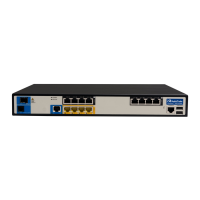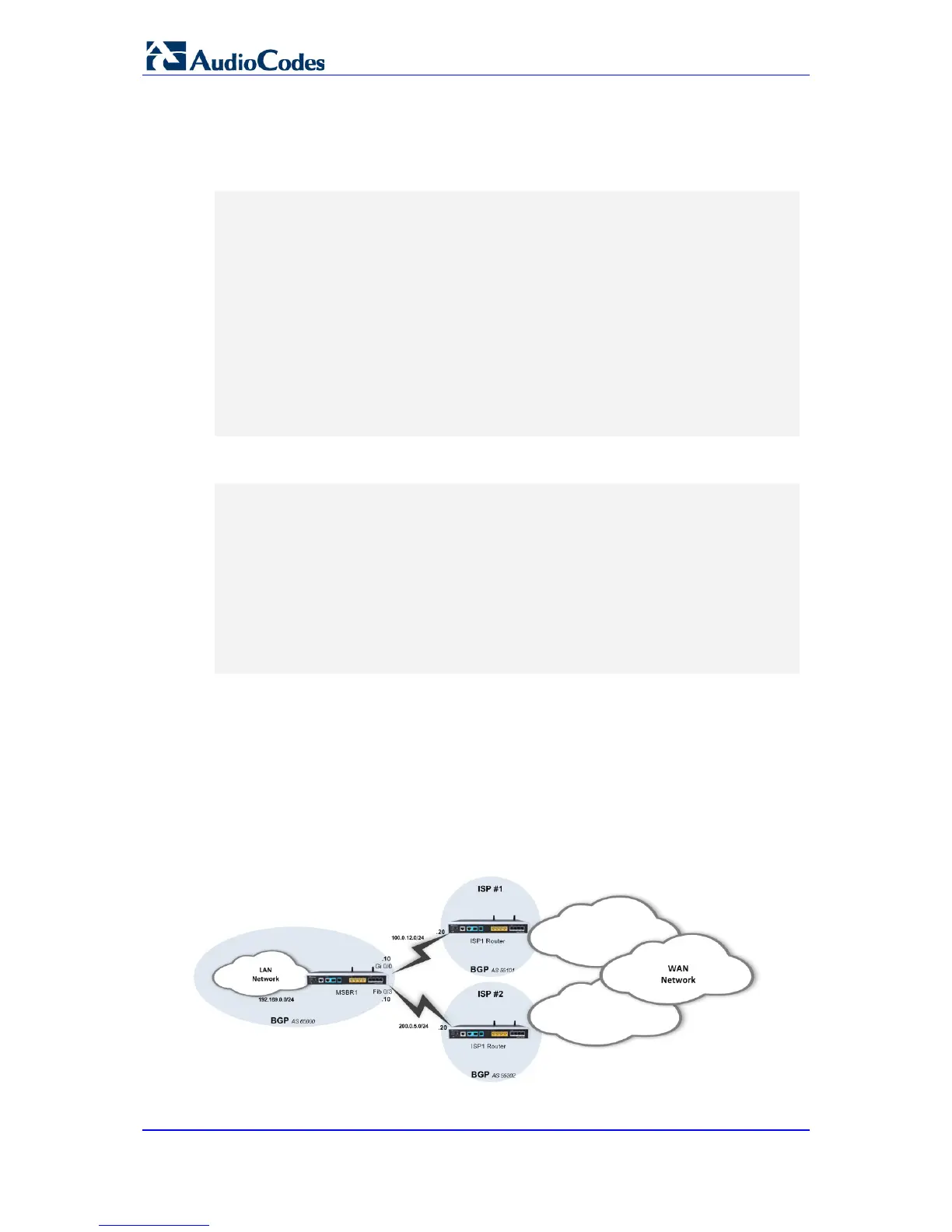IP Networking Configuration
Configuration Guide 66 Document #: LTRT-31657
11.3.2.2 Output
The output shows local parameters of the BGP process and also the established BGP
adjacencies:
MSBR# show data ip bgp summary
BGP router identifier 1.1.1.1, local AS number 65000
RIB entries 3, using 264 bytes of memory
Peers 1, using 4488 bytes of memory
Neighbor V AS MsgRcvd MsgSent TblVer InQ OutQ
Up/Down State/PfxRcd
100.0.12.10 4 55101 100 100 0 0 0
01:36:56 2
Total number of neighbors 1
MSBR#
The following output shows that the router learns a default route through ISP BGP peer:
MSBR# show data ip route
Codes: K - kernel route, C - connected, S - static,
R - RIP, O - OSPF, B - BGP
C 100.0.12.0/24 is directly connected, GigabitEthernet 0/0
C 192.168.0.0/24 is directly connected, VLAN 1
B 0.0.0.0/0 [20/0] via 100.0.12.10, GigabitEthernet 0/0,
01:30:46
MSBR#
11.3.3 51BExample 2
The example shows a scenario in which an organization is connected to the public internet
through two ISPs. This is often called a Multi-WAN configuration and it provides high
availability and redundancy of the internet connection. It is demonstrated that both ISPs
advertise a default route through the BGP protocol, and are prioritized by manually
changing the BGP Weight attribute.
Figure 11-4: BGP Multi-WAN

